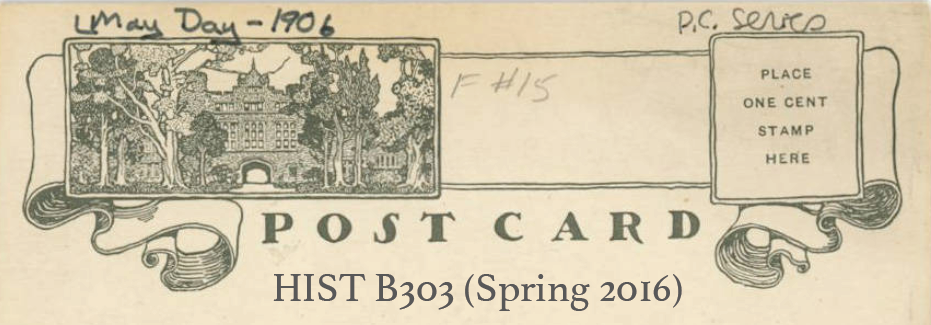In the article “‘Cataloguing Fever’ Strikes Student Organizations’, from the February 12, 2004 edition of Bryn Mawr Now, the origins of the partnership between students and Bryn Mawr Information Services to catalogue the books of Rainbow Alliance and Sisterhood is described in the following way:
“”Before Information Services became involved, we wanted to make sure this would be the students’ project, rather than the library’s project,” Goff [Associate Chief Information Officer] says. “Once we got a commitment from the students, we provided a little seed money to kickstart the process. We funded a certain number of student-worker hours for each organization, with the understanding that they would find additional funding if the cataloging couldn’t be finished in one semester.””
Bryn Mawr–like a lot of other colleges, I imagine–continually celebrates student agency. Students are told, time and time again, that we should take initiative and follow our passions, and that the college will support us in our endeavors. The times that the college doesn’t live up to that promise aside–and there are plenty of those times, but I’m not going to discuss them here–there are a lot of amazing initiatives organized and executed by students, with the support of college faculty and/ or staff, and there is a lot of privilege in being in a space that provides students the resources they need to realize their ideas and passions. However, I want to push back on this unquestioning celebration of student agency, not because student agency isn’t vital or powerful but because, too often, encouraging students to take on projects relieves the administration of the responsibility to take on those projects themselves. The quote above, about making sure that the cataloguing project would be the students’ project rather than the library’s, seems at first aimed at promoting student agency and control–and perhaps it was meant that way–but it rubbed me the wrong way because I interpreted it as yet another instance of the responsibility for preserving and publicizing experiences of marginalized students being thrust upon those same student populations. Black at Bryn Mawr, for example, is an amazing project and testament to student initiative and achievement, but why did it take students to start that project instead of the administration proactively committing institutional resources to researching and publicizing the histories of black students, staff, and faculty at Bryn Mawr? Similarly, a lot of the campus public history projects detailed on the National Council of Public History’s campus history as public history working group page seem driven by a faculty member, or students, or both, but with no real initiative taken by the administration to publicize the hidden histories of marginalized groups. I in no way want colleges to limit student agency, but relying exclusively on student agency not only relieves the administration of its obligation to make the college a more accessible and just place for students; it also ensures that these projects never exist on a long-term basis, because student agency is by definition transient. Students attend this institution for, on average, four years and then leave, and if a student leaves without another student to carry on their project–as too often happens–then the project is dropped, and students 20 or 30 years later addressing, far too often, the same issues are left to almost reinvent the wheel. This lack of continuity isn’t students’ fault though, and it shouldn’t be solely students’ responsibility to make sure that attention is paid to the experiences of marginalized groups at Bryn Mawr, or anywhere else. It should also be the responsibility of the administration, who actually have the resources and continuity to carry on these projects long-term.
Going into my final project with these reflections, I want to think about the ways in which I can design a public history project that effectively establishes students and the administration as partners, neither suppressing student agency nor relying on it as the driving force. What would such a partnership look like, and how can students work with the administration to convince them that such a partnership is valuable?
